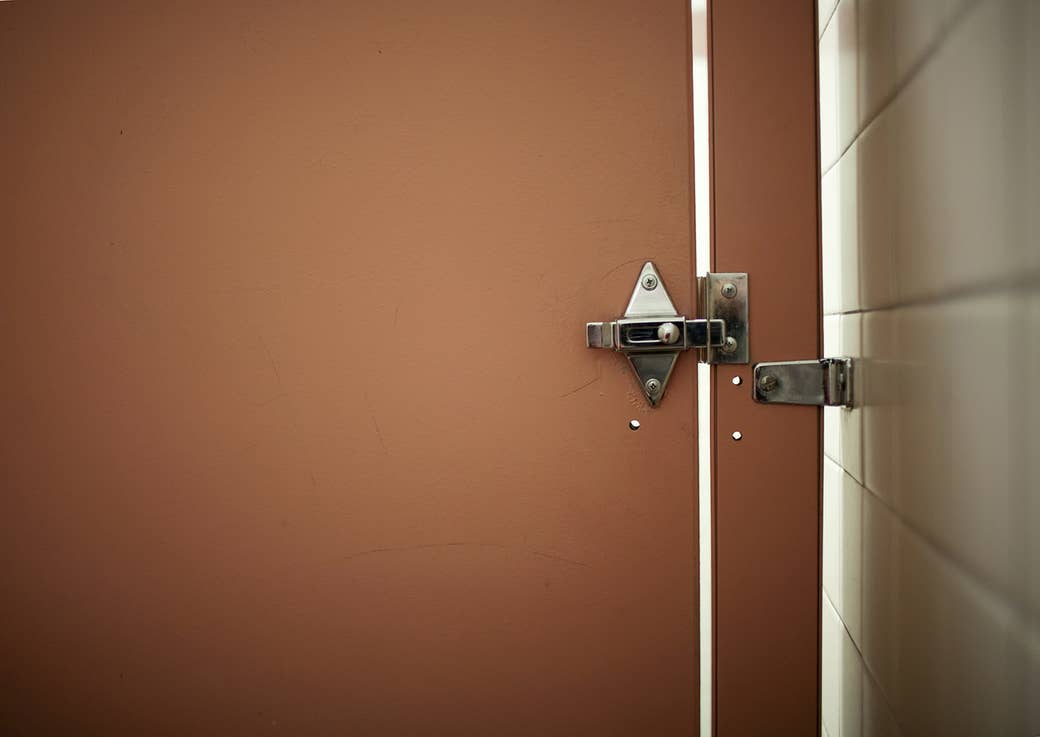
A 2014 DirecTV ad posits this concept: There are two Rob Lowes. One is the chiseled, articulate movie star, who has DirecTV. The other is Painfully Awkward Rob Lowe, who sports high-waisted Dockers, a fanny pack, and a middle part, and still subscribes to DirecTV’s competitor, traditional cable. Suave Rob Lowe has an upscale house and makes blender drinks while his many pals mingle and watch boxing on DirecTV. Painfully Awkward Rob Lowe shares the decor taste of The Golden Girls and loiters alone by his picture window, waiting for the cable installer who, he frets nervously, may be “a girl.” At the end of the commercial, Painfully Awkward Lowe stands in front of a urinal beside two other men in a public bathroom. “Fact,” he says over his shoulder to the camera, “I can’t go with other people in the room.”
The message is, of course, to choose to be the right Rob Lowe, the one with friends and money, not the awkward loner who can’t pee in public bathrooms. The commercial, one in a series that compares DirecTV Rob Lowe with other inferior, cable-subscribing Rob Lowes (like Crazy-Hairy Rob Lowe and Peaked in High School Rob Lowe) is — I’ll say it — funny. I get it. You probably get it. My neighbor’s teenage boys definitely get it. Even Steven Soifer gets it.
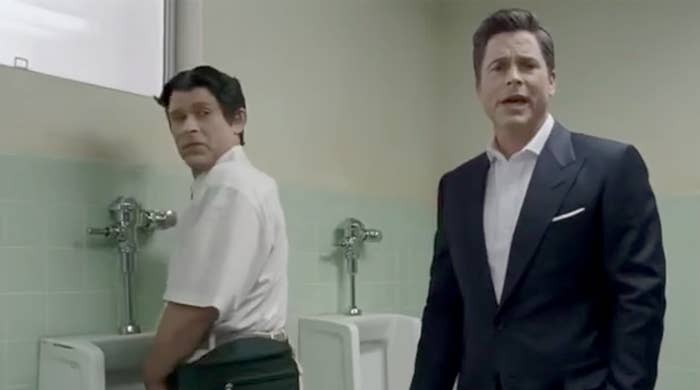
Soifer is a Memphis-based clinical social worker and CEO of the International Paruresis Association (IPA). He started the IPA two decades ago to heighten awareness of paruresis and advocate for people with the condition, more commonly known as shy bladder syndrome. Paruresis is the difficulty or impossibility of using a toilet or urinal anywhere there are other people around, or where the sufferer believes there are other people around. It’s classified as a social anxiety disorder in the American Psychiatric Association’s Diagnostic and Statistical Manual of Mental Disorders. Soifer is also the man who, on Twitter, called out DirecTV and Rob Lowe, calling the Painfully Awkward character “demeaning.” Lowe hit back, tweeting that his bladder was “gregarious” and that people needed to lighten up.
Soifer doesn’t like the ads — but, he says, the IPA got mileage out of it. Soifer appeared on the American talk show The Doctors and was interviewed for stories in newspapers and magazines. The public response wasn’t exactly sympathetic — even some shy-bladder sufferers criticized Soifer’s blasting of Lowe — but as far as awareness of the condition goes, it was mission accomplished. Previously clueless people learned that shy bladder syndrome existed, and others suddenly understood it was more than just the quirk of a few weirdos. Doctors are years away from understanding the mechanisms of paruresis, but they know it’s both psychological and physiological. Keeping tabs on numbers is “nebulous” — that’s Soifer’s word. “Anyone I talk to can tell me a toilet story where they were not able to go. But for some people, that sticks, and shapes the rest of their life.” The condition is believed to affect 7% of the population — some 22 million people in the US alone.
He knows people who are functionally agoraphobic, who might go to the store and shop for 30 minutes, but who have to be close enough to get to the bathroom at home.
Perhaps ironically, given the Rob Lowe kerfuffle, having a shy bladder is widely thought to be caused by bullying. That’s what Soifer hears most from the people he treats for the condition, and that’s how it happened to him. He says paruresis has never really made a significant impact on any of his major decisions — except one date, which ended at a tiny Brooklyn flat. “The bathroom is here,” he says, gesturing with his hand, “and the bed is here. That was the end of the date.” Others make all their decisions based on the condition. He’s known hundreds of people to change jobs or pass up a promotion because their existing workplace bathroom situation is safe, and the new situation involves travel or officemates. Two examples he cites: a journalist who works as a newspaper deliverer and a medical student who can’t finish a residency. He knows of a woman who can only pee late at night in her backyard. He knows people who are functionally agoraphobic, who might go to the store and shop for 30 minutes, but who have to be close enough to get to the bathroom at home.
How do public bathrooms come into all this? After all, it’s not like public bathrooms will ever be the same as the ones we have at home. We can never rid them of other people. Their reason for being is their capacity to be shared. The answer comes squarely on the design front. Changing small details in the ways public bathrooms are put together — relatively easy, inexpensive fixes — can benefit many and have little to no effect on the experiences of others.
For men, bladder shyness is primarily about visual privacy. So, let’s picture the common scene in a men’s bathroom. A line of close-together, low-bowl urinals with no privacy dividers, or a dreaded trough urinal, in clear sight of the line of people waiting for stalls. That’s a nightmare for the pee-shy. For women, it’s mostly about auditory privacy. That’s where traditional, open- bottomed cubicles — so-called surveillance stalls — become a nonstarter. Proximity comes into the condition too: The closer people are, the harder it is to go. “Design is such a big part,” Soifer says. “It doesn’t solve the problem, but I would say 90% of people, if they were in a soundproof bathroom where there weren’t people waiting, they could go.”
Oy, but there’s the rub. Soundproofing we can manage. But how can we stop people from waiting to use bathrooms? There’s only one solution for that. More bathrooms.
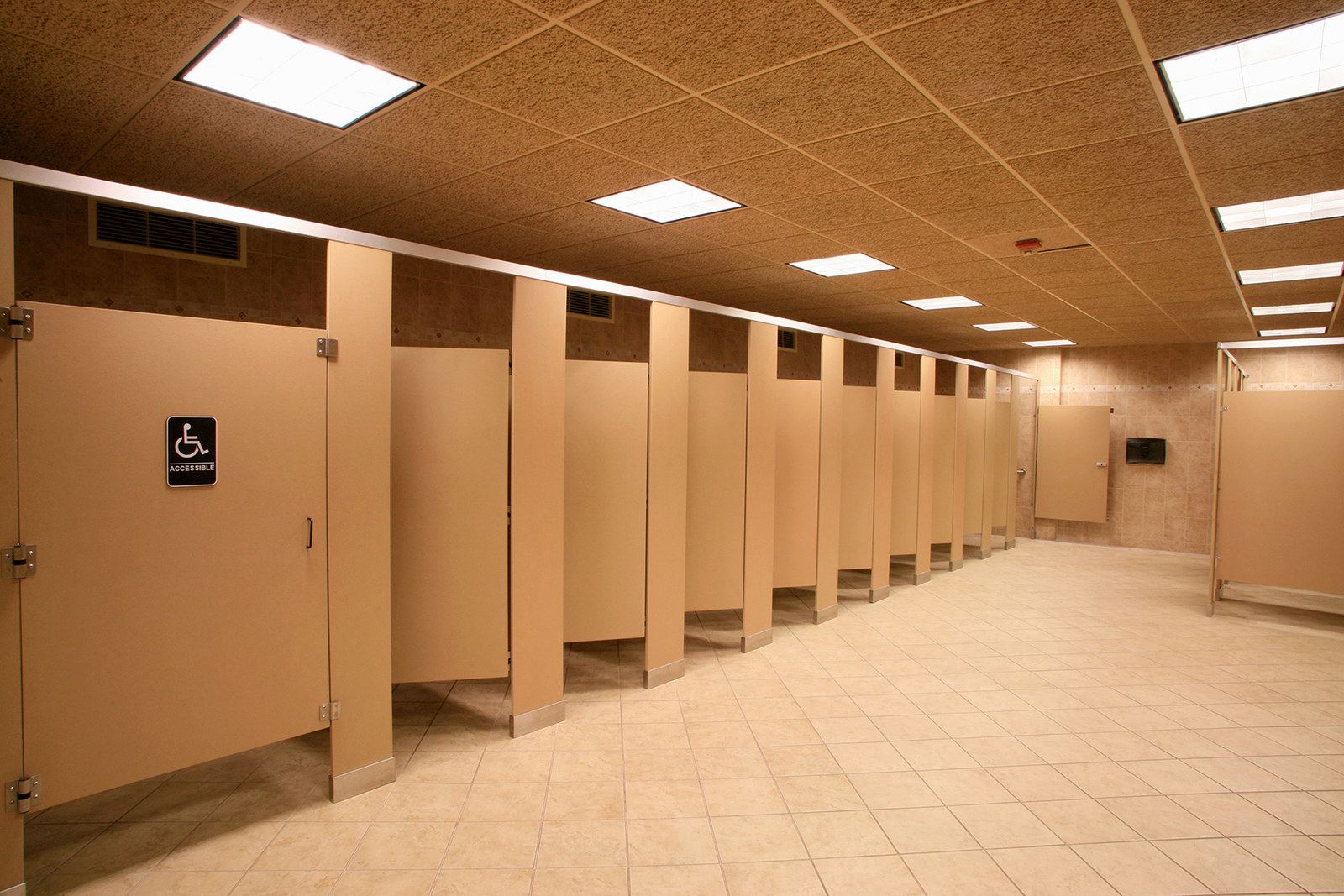
When people have Crohn’s syndrome or colitis, their bathroom needs are episodic and urgent. Episodic because they don’t have problems, or even the same problems, all the time. And urgent because a small delay getting to a toilet can make the difference between a normal day and shitting your pants. Help for people with most diseases of the bowels comes not in the form of design modifications, but by way of fast and easy access to bathrooms. Everywhere. This fix requires no changes to bathroom configuration, no additional installations, no changes to building code, no investment of money or infrastructure. Yet, as we’ve seen with so many other bathroom woes, easy fixes — social fixes — are often the most difficult. Folks with urgent, invisible bathroom needs in one sense require the highest level of accommodation, because it boils down to this: Please, stranger, let me use your bathroom right now, because I really, really need it.
Jennie David remembers shopping with her mom. David is a doctoral student in clinical psychology at Philadelphia’s Drexel University. She was diagnosed with Crohn’s at 12. Early on in her process of settling into the idea of living with Crohn’s, she was at a Walmart, using the store’s accessible bathroom stall. When she opened the door to come out, a woman was waiting, clearly unimpressed that David had opted — needlessly, to her eyes — for the accessible stall. “The way she looked at me, it was like, ‘What a vile young girl, so disrespectful.’ And then I see her at other places in the store. You know, she has no authority over me, I know nothing about her. But she stared me down. And some people have the guts to say things to your face.” David deals with questions around the medical legitimacy of her condition all the time. See, David looks healthy, and acts healthy, if there is such a thing, yet she has great health challenges and extraordinary bathroom needs. “If I had no hair, it would be different. What? Am I supposed to lift up my shirt to show them?”
Help for people with most diseases of the bowels comes not in the form of design modifications, but by way of fast and easy access to bathrooms. Everywhere.
David sits on a floral duvet on her white metal bed. Her posture shows she spent her youth as an accomplished dancer. Beneath the top of her loose gray T-shirt, a port-a-cath pokes out. An IV tube snakes from it to a bag on a pole. She is chatting with me during the lengthy stretch of time she needs to be home to treat the chronic dehydration that’s caused by her Crohn’s — two liters of sodium chloride solution, three times a week. The infusion takes four hours, which works just fine, since we have a lot to chat about, and David is no longer the 12-year-old who used to sit by the phone waiting for her gastroenterologist to call to tell her she’d been misdiagnosed. She is happy to share.
At 19, David had an ostomy. She had the lower portion of her colon and, in her case, her rectum, removed. Her feces now collect in a bag attached to a hip-level stoma, which is the protruding end of her lower intestine. “I couldn’t wait,” she says, talking about the surgery, and that’s both urgency and excitement in her recollection. She had gotten progressively sicker over the years after her diagnosis, and progressively less able to control her bowels. For about six weeks before her surgery, she tells me, she was in adult diapers, with a commode within arm’s reach at all times. That’s why there’s freedom with an ostomy. “There is not that rushing. You go where you walk.” But an ostomy is not without its challenges. David’s stoma swells a little at high altitudes, so she has had small leaks on airplanes. And so anytime she flies, she must check, clean, and sometimes change her bag. To do that, she has to lay out the kit she carries with her in counterless airplane bathrooms, where a small mess can quickly become a bigger one. David carries cards — one that says she has Crohn’s and another that says she has an ostomy — that give her legal access to employee-only bathrooms in states where that legislation exists. She is likewise entitled to use accessible bathrooms because the Americans with Disabilities Act covers her — at least for now; let’s see if the legislation that House Republicans passed in February 2018 removing incentives for businesses to comply quickly with ADA rules will change things. But even though she knows she’s allowed by law to use the bigger stalls, she isn’t always at ease doing so — shades of Walmart. “If there is a line in the bathroom, technically I can go up and say, ‘Look, I have a chronic illness. I need to use the bathroom.’’’ But she almost always waits. “It’s interesting that, for someone who is an advocate, and who is open about it, I still find myself doing things I don’t need to be doing.”
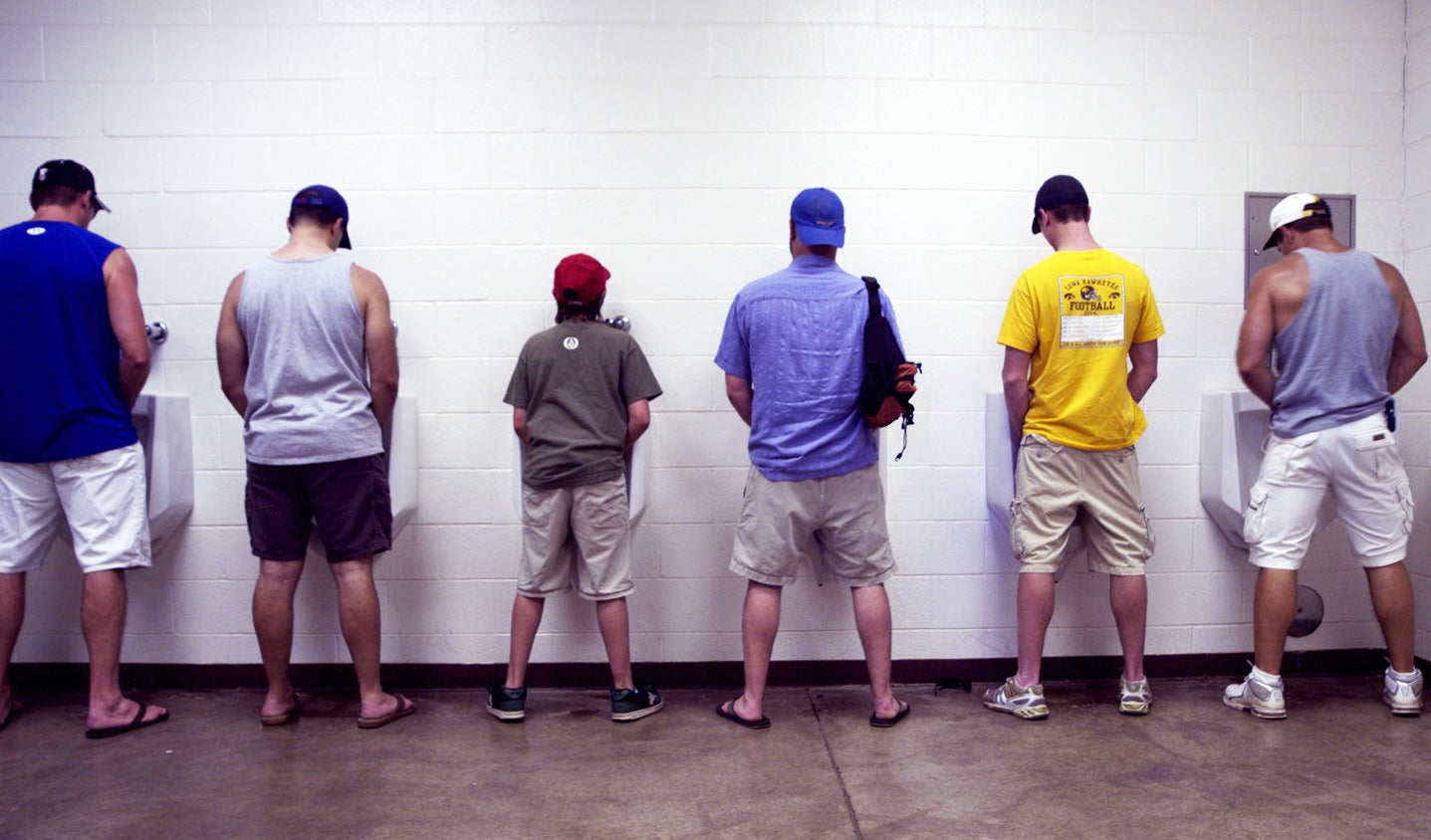
But, really, aren’t we all pretty much one step away from life events that could — and will — change our relationship to public bathrooms? Decreased mobility is something almost all of us will face in our lives, whether by way of an accident, aging, or heredity. Most of us will confront these challenges in ourselves and in those we care for. And we’ll suddenly find that the bathroom stall status quo no longer works for us, either.
The University of Illinois’s Kathryn Anthony has written books about the effect of design on people’s lives and has testified before US Congress about potty parity for women. But she also has a deep personal connection to the issues of accessibility in public bathrooms. Her late husband had cancer for seven and a half years. He died at 46. At the very end, he was in a wheelchair. “Only one week,” Anthony says, “but we went places. He was well enough to get out and about. He didn’t look good, but we lived in a teeny-tiny place and he needed to get out and get fresh air.” Where Anthony connects to the accessibility issue isn’t so much on the details of access — sink height and support bar placement, for example — but on issue of gender neutrality and the need for bathrooms big enough for caregivers to accompany people who need assistance. Her husband was too weak to open bathroom doors, too drained by illness to easily move himself. But they had a difficult time on their outings finding bathrooms where Anthony could accompany him, and she often had to wait outside, fingers crossed that everything would be okay.
When finding a bathroom in public just becomes too much of a gamble, people stop going out. The problem isn’t solved. It’s shelved.
Around that same time, in 1998, a 9-year-old boy, Matthew Cecchi, was murdered in a beachfront public bathroom in Oceanside, California, where he was attending a family reunion. A man had gone in, killed the boy, and walked out, all while Cecchi’s aunt waited for him outside the men’s room. Digesting the horror of this story, which happened near Anthony’s San Diego home, and reflecting on her own experience with her husband, galvanized her views of gender-neutral accessible bathrooms. For her, they solve a few different problems — they give vulnerable people privacy; they allow caregivers to assist the people they are caring for in the bathroom, regardless of their gender; and they boost parity, because women can use these spaces just as readily as men. “It’s a family issue,” Anthony says. “I think that’s the way it really needs to be seen.”
Accessibility is a family issue in a simpler, more material, way, too. Many of the barriers affecting people using canes, walkers, and wheelchairs also affect parents and caregivers pushing strollers. That’s why Anthony calls “healthy parent, healthy children, using wheels” a “mobility impairment.” While accessible bathroom standards mean people with disabilities can (ideally) reach toilets, urinals, and sinks, parents with small children have to lift kids onto toilets, hang onto them so they don’t fall in, and hoist them up to sinks. Step-stools help, but finding them is hit and miss. Writing about this now, I am smacked with flashbacks of all that hauling and holding I did as a parent — so many near-plunges into toilets; so many times my kids had their shirt-fronts soaked by the wet sink counters I balanced them against, supporting their bums with one knee as I held them under the armpits to help them reach the faucet. Child-size toilets exist (I mean, you can just order one off Amazon) and children themselves are ubiquitous in many public buildings, but it’s practically unheard of to see mini-toilets outside of preschool bathrooms. Small-size urinals? Occasionally. Plainly, Anthony says, “people with disabilities have been far more successful than parents with children in having this issue heard.”
Where parents have been heard, the result is often that they are lumped into the accessible stall. More often than not, that stall is where you’ll find the baby-changing station in small public bathrooms, and sometimes in larger ones, too. And parents aren’t the only ones elbowing in on accessible space. Call me a bad person, but I take up the accessible stall when I’m traveling with a suitcase. Anthony, on this front, sympathizes: “So many travel facilities do not have access for us when we are carrying suitcases and luggage. You can barely close the door and the suitcase sometimes touches the edge of the toilet.” She closes her eyes and shudders with her shoulders. “We are mobility impaired because of what we are carrying.”
When the accessible and family toilet is its own separate, gender-neutral room, transgender and gender-nonconforming users can access it to avoid having their gender scrutinized in the men’s or women’s rooms. Parents of physically able kids on the autism spectrum, too, often find it helpful to send their children into the separate bathroom, where the youngsters can have more control over the commotion and sounds that can cause them upset in multi-stall spaces.
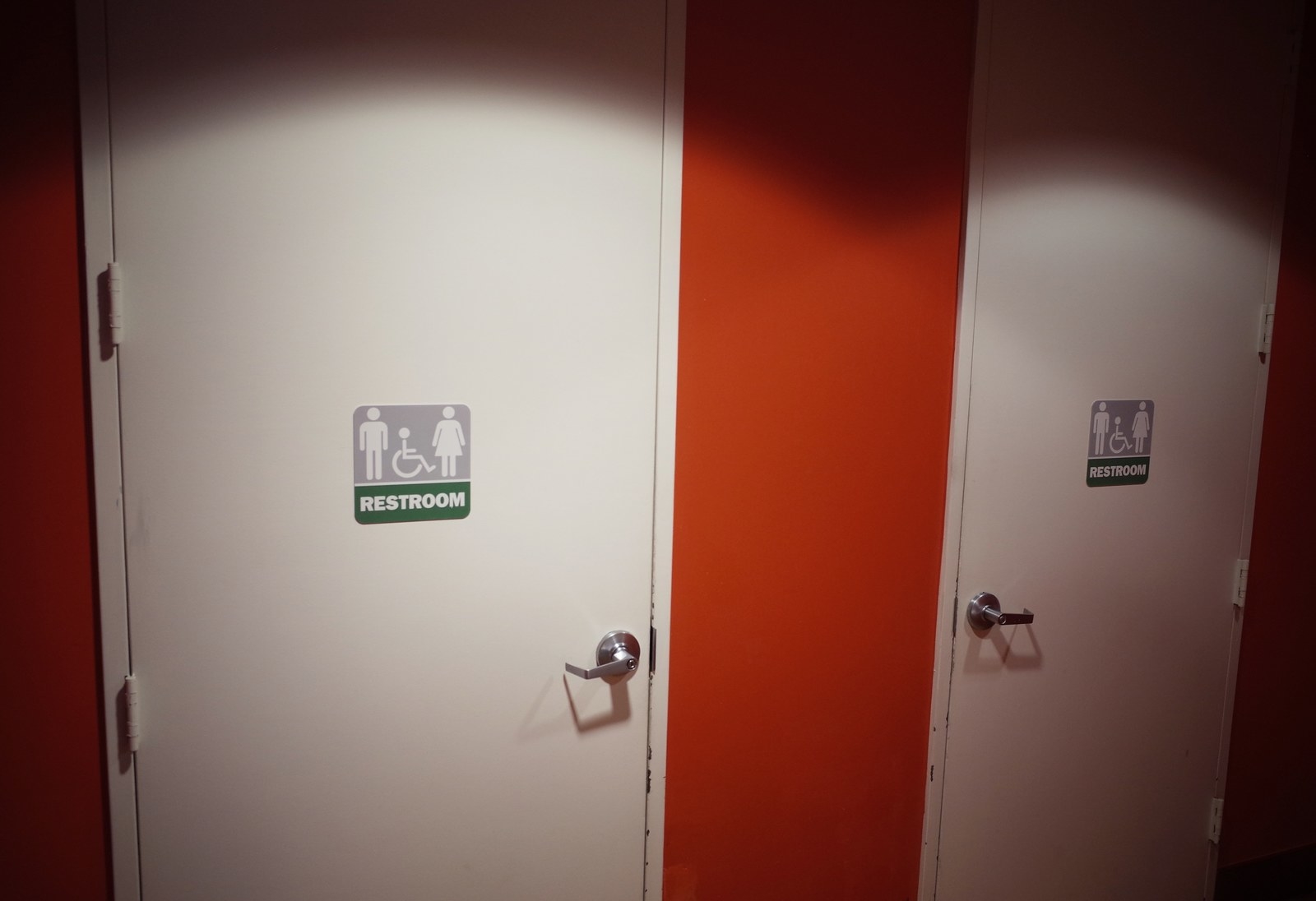
There are two ways to look at all this space-sharing. On one hand, it’s recognizing diverse needs and making use of flexible space to accommodate people. But it’s also potentially taking space from people who need it. After all, parents with children, people with luggage, transgender folks, and those on the autism spectrum can all make do in other stalls. People with wheelchairs and those who use walkers cannot. If anyone else is using their stall, they have to wait. Anthony likes that space for people with disabilities can be used by others who decide they need it. But, she says, it’s not without risk. “That’s the chance someone takes when they use one of those stalls. They keep out someone who genuinely needs it — that is, who is mobility impaired, or is in a wheelchair.”
The population with special bathroom needs is often passed off as inconsequential — by the numbers, small. There are some convenient factors that allow this myth to stay put in people’s minds. Primary among them is that going to the bathroom is a private act, even in a public space. And there’s this: Visibly undetectable conditions are just that — undetectable. Half the people in a multi-stall bathroom with you at any given time could be, say, struggling with hypersensitivity to the deafening hand dryers and auto-flush toilets, emptying ostomy bags, holding one kid on the toilet while another is crawling from under the stall, changing an adult diaper, or trying to drown out the world with headphones so she can pee. You don’t have a clue what’s happening inside those stalls. Finally, tragically, there’s this, from Jennie David: When the issues become too big, when finding a bathroom in public just becomes too much of a gamble, people stop going out. It’s then that they go from being merely unseen to being invisible. The problem isn’t solved. It’s shelved.
“Something is wrong here,” Anthony says. “I wish we weren’t all as self-centered as we are. But some of these issues, until they hit you personally, you are not aware, and you are not as bothered by them.” Steven Soifer, of the International Paruresis Association, once came up with a figure — a quarter of the population, he says, maybe a third. “If you figure out the entire spectrum of people who have different needs at different times. Seven percent have paruresis. Another 7% are incontinent. You’re already up to 14[%]. You throw in menstruating women, parents with kids, people with ostomies…” He stops there, trailing off. “Too many to count.” ●
Excerpted with permission of Coach House Books. All rights reserved.
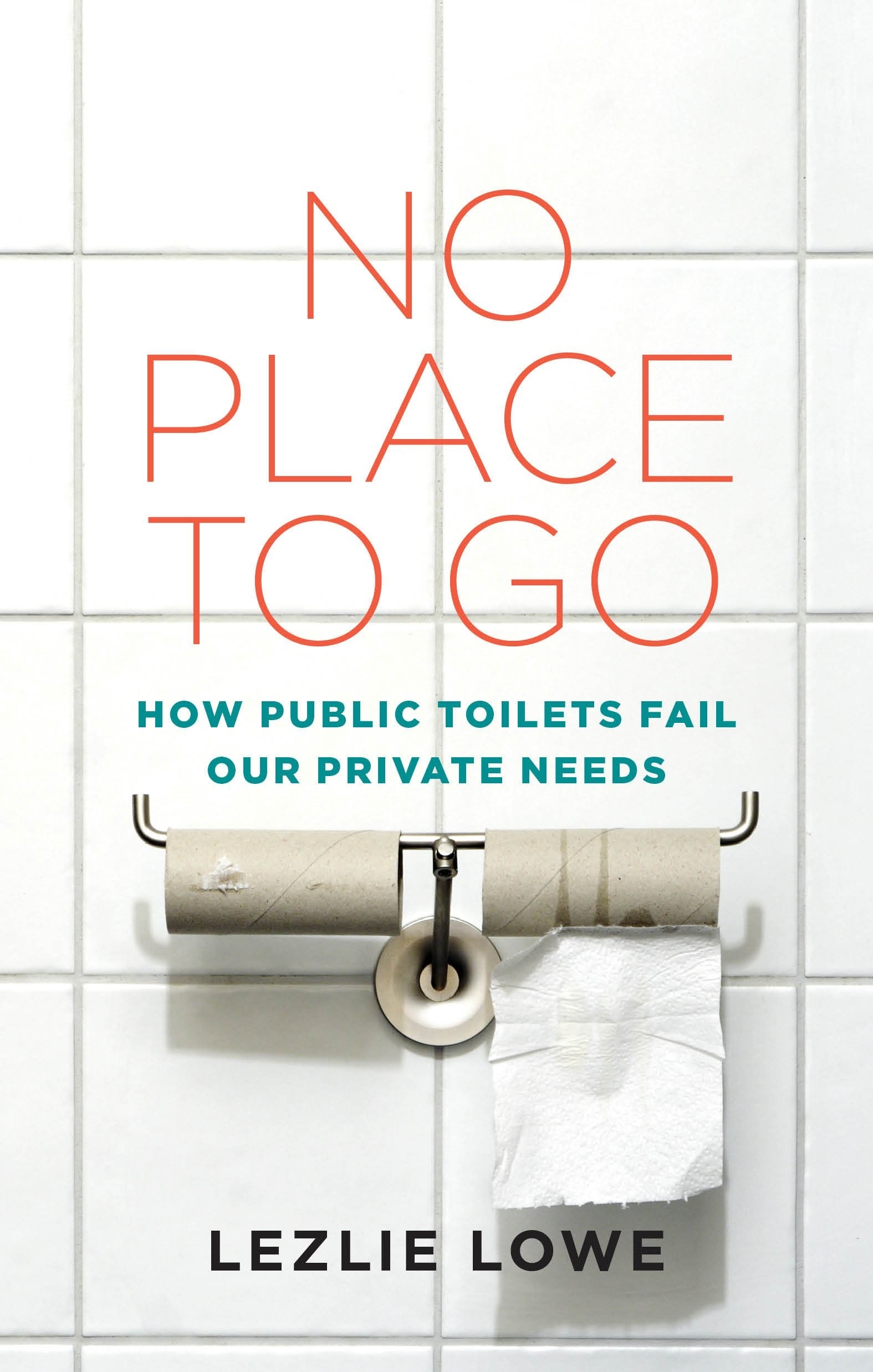
Lezlie Lowe is a freelance journalist and journalism instructor based in Halifax, Nova Scotia. She has been recognized for her longform journalism by the Canadian Association of Journalists and the Atlantic Journalism Awards. She holds an MFA in creative nonfiction from the University of King’s College, where she also teaches in the journalism department.
No Place to Go: How Public Toilets Fail Our Private Needs is available Sept. 11.
